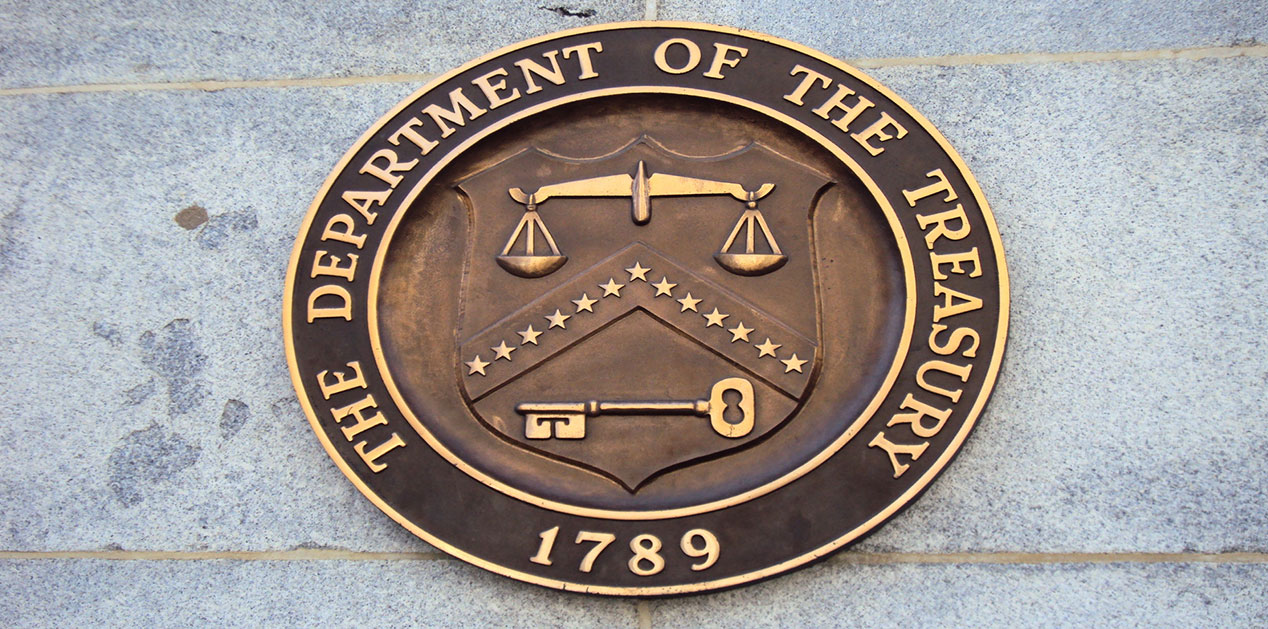Being an exports-driven and a high trade-to-GDP region, East Asia has more often than not used monetary instruments to affect favorable exchange rates. Depreciated exchange rates have been vital in ensuring the competitiveness of exports and a positive balance of trade. Central banks in many East Asian countries in addition to holding foreign reserves also buy foreign sovereign debt to adjust exchange rates and cushion out the general volatility in global financial markets. Sovereign debt is government-backed and thus is generally viewed as a low-risk asset with a high chance of repayment unless the country’s debt is unstable relative to its GDP. The most prominent sovereign debt bought not just in East Asia but globally is the US Federal Debt sold by US Department of Treasury as bills, notes, bonds and inflation protected securities. Despite a high GDP debt ratio (114% of GDP, 2016), US treasury securities are safe assets owing to US global primacy and their dollar denomination. Of the almost US$ 20 trillion outstanding US Federal debt (end 2016 figures), around 30% is held in US intra-governmental holdings while the remaining 70% debt is held by the public including 30% by foreign governments and investors1. Thus, Americans internally own more than 2/3rd of their own federal debt.
More than half of US treasury securities held by foreign governments (US$ 2.7 trillion or around 14% of total US debt) is owned by East Asian governments2. The US alliance system in East Asia post-World War II provided a general sense of security in the region and allowed for countries to focus on their economic growth and development.In addition, the US domestic market was seen as the most lucrative export market and thus most countries adjusted their exchange rates according to the market value of dollar. One of the ways to adjust their exchange rates involved soaking the large supply of export dollars earned by buying large portfolios of US treasury securities to ensure that the dollar did not depreciate against their own currencies. In fact, East Asian governments consider being the largest holder of foreign-held US treasury securities, a much coveted position in both strategic and economic matters. In October 2016, Japan surpassed China (once again) to become the largest holder of US treasury securities. In August 2008, China had surpassed Japan in the same. Though, both Japan and China have been seeing declining portfolio holdings, China witnessed a decline of US$ 41.3 billion in October making its cumulative holdings stand at US$1.12 trillion, while Japan’s portfolio stood at US$1.13 trillion3.
Since the new millennium, China’s rapid economic growth after becoming the ‘World’s Factory’ has significantly increased economic ties between US and China. In 2015, US-China bilateral trade surpassed US-Canada trade figures to become the largest bilateral trade relationship in the world. The trade figures of US with China and Canada in 2015 stood at US$ 600 billion and US$ 577 billion respectively. Further, the persistent trade surpluses for China in US-China trade (US$ 367 billion in 2015) makes buying US treasury securities mandatory rather than voluntary for China4. The Chinese government fixes the value of the renminbi (RMB) with a narrow defined trading band in a ‘managed floating rate’, while the People’s Bank of China has an all-encompassing control over all foreign currency transactions in China. As incoming flow of dollars continues unabated in China, the supply of dollars increase threatening to appreciate the value of RMB, and leading to feared loss of competitiveness. Buying US treasury securities allows the People’s Bank of China to convert the large trade surpluses into valuable assets and ensure China’s export competitiveness without fear of distorting the value of RMB or increasing inflation in the Chinese economy.
Similar to China, Japan too has been a consistent buyer of US treasury securities. Despite the end of Bretton Woods’ system in 1971, it wasn’t until the Plaza Accord in 1985 that the undervalued yen rise began gradually. In Japan’s case, while the huge trade surpluses with US generated stronger demand for yen in foreign-exchange markets, yen’s value was offset by large capital outflows from Japan. A wide differential in interest rates between United States and Japan, led Japanese investors to heavily invest in US (Rockefeller Centre, Columbia Pictures made big headlines at the time) and ensured that the dollar did not depreciate against the yen. Buying US debt also held strategic connotations for Japan as it helped allay criticisms of being a “free-riding ally” and calm tensions over US-Japan trade friction. Post the stock market collapse and asset-bubble burst in 1990 and the ensuing recession/stagnation with an aging and declining population, the Bank of Japan has focused heavily on quantitative easing. With ‘Abenomics’ now, one can say that Japan will continue to steadily purchase large stocks of US securities in order to find a secure investment outlet, although Japan is also one of the largest holders of US Corporate debt.
The dollar's status as the world's reserve currency and desire of many governments to keep their currencies depreciated and hold “safe” dollar assets (since there is a severe absence of an alternative), has ensured global financing of US debt and consumption. In a self-perpetuating cycle, this has helped sustain large US military commitments and thus ensure the supremacy of American power. In case of East Asia, US has considered the large chronic trade deficits as side-effects of US public finance and private financial entities having access to cheap capital from China/ Japan’s large domestic savings and huge foreign currency reserves. Further, easy access to the cheapest imports of manufactured goods as well as raw materials help maintain US standard of living without (inflationary) income increases and also reduce input costs to US businesses. But a growing debt-to-GDP ratio has made the US vulnerable to a foreign sell-off of US securities as it would decrease money supply and drive up US interest rates that would make the US debt far more expensive to service.
However, the massive sale of US treasury securities by the China in 2016 did not affect doomsday scenarios. Decades of double-digit growth have left China distressed from overcapacity, a real estate bubble and a looming financial crisis with growing outreach of the shadow/unorganized banking sector. It has also been plagued by simultaneous “hot money” (short-term speculative investments) and large domestic capital flight. It has been reported that Chinese nationals, despite restrictions, have moved half a trillion dollars abroad into US real estate among other offshore assets, as the Chinese market melted down5. Early in 2017, while Chinese government stuck to the existing quota of US$ 50,000 of foreign currency per person a year, it listed extra disclosure requirements to crack down on capital flight6. Since 2013, the Chinese trade turnover has been declining, while trade surplus has been gradually rising because imports have fallen owing to decline in commodity prices. In 2015, while total trade declined by 8%, trade surplus increased by 35%7.
Growth rates are expected to be between 6.7- 6.5% or below this year. Stimulus spending and efforts to stabilize RMB (from pressures due to capital flight) has led the Chinese government to rapidly spend its massive foreign exchange reserves. In November 2016, the foreign exchange reserves stood at below 2011 levels - US$ 3.05 trillion, with around US$ 920 billion having being spent in the previous 28 months8. Nevertheless, not all is gloomy with China’s future as the Chinese government has consciously sought to readjust the Chinese economy to slow down and be more domestic-consumption oriented. Also structural changes are very visible in the Chinese economy, as China from being the largest recipient of inward FDI, has now also become the third largest investor of outward FDI (OFDI). Its non-capital OFDI stood close to US$ 120 billion in 20159. However, with the recent US federal funds rate hike in December 2016 (and conjectures that more will follow in 2017), has led to speculations of a strengthening of the US dollar which may weaken RMB drastically leading to inflation in the Chinese economy. Further, external debt of China (US$ 1.68 trillion, June 2015 figures10) will become more expensive as both the principal amount and interest rates on that will also go up since dollar value will also go up.
Thus, China’s massive sale of US treasury securities in 2016 can be seen in the context of its economic necessity to engage in monetary tightening. Further, initiatives like Belt and Road, Asian Infrastructure Investment Bank have now opened new avenues to better utilizing China’s trade surpluses that are in sync with its foreign policy goals. The International Monetary Fund has also included RMB from October 2016 into the Special Drawing Rights (SDR) basket along with Dollar, Euro, Yen and Pound. RMB’s status as an XDR (SDR currency) is a milestone in the internationalization of the RMB, and an affirmation of the success of China's economic development. Thus, China’s presumed ambitions to replace the dollar with RMB as the reserve currency has a long way to go. With the new Trump administration in US, and his agenda of infrastructure spending and increasing trade protectionism, there is uncertainty on the market value of dollar. With US treasury securities forming 1/3rd of Chinese foreign exchange reserves, China is highly unlikely to engage in a currency war with the US and erode its own holdings.
Conclusion
To ensure export competitiveness, it is vital for East Asian countries to maintain value of their own currencies against dollar. Since US is the prime export market, investing in US treasury securities allows them to prevent depreciation of dollar (against their currencies) that arise out of their huge trade surpluses with the US. Also lack of comparative global “safe” assets, ensures the popularity of US treasury securities in East Asian financial portfolios. Despite the self-perpetuating interdependencies between US and East Asian economies due to US treasury securities, the US government enjoys a relative immunity from the holding of its debt by East Asian governments. The US government owns more of its own debt (through treasury securities) than China and Japan, and can always choose to buy more to monetize its own debt. Thus, dollar denominated US treasury securities will continue to be in demand and hold prominence in East Asia.
References
- US Debt Clock: http://www.usdebtclock.org/.
- Major Foreign Holders of Treasury Securities: http://ticdata.treasury.gov/Publish/mfh.txt.
- Bloomberg: Sarah McGregor, Dec 16, 2016, Japan Overtakes China as Largest Holder of U.S. Treasuries, https://www.bloomberg.com/news/articles/2016-12-15/japan-overtakes-china....
- United States Census Bureau: U.S. Trade in Goods by Country, https://www.census.gov/foreign-trade/balance/index.html.
- CNBC: Ron Insana, Oct 15, 2015, What China selling US Treasurys really means, http://www.cnbc.com/2015/10/14/what-china-selling-us-treasurys-really-me....
- Bloomberg: Tian Chen, and Jun Luo, Jan 3, 2017, China Gets Strict on Forex Transactions to Stop Money Exiting Abroad, https://www.bloomberg.com/news/articles/2017-01-03/china-drills-down-int....
- Ministry of Commerce, People’s Republic of China: Brief Statistics on China’s Import & Export in December 2015, http://english.mofcom.gov.cn/article/statistic/BriefStatistics/201603/20....
- State Administration of Foreign Exchange: Forex Reserves, http://www.safe.gov.cn/wps/portal/english/Data/Forex.
- China Invests Overseas: China's outward FDI to reach US$150bn by 2015, http://www.china-invests.net/20120516/29183.aspx.
- China’s external debt stands at $1.68 trillion in June, Oct 2, 2015, http://english.gov.cn/archive/statistics/2015/10/02/content_281475202939....
Published Date: 16th January 2017, Image Source: http://www.live-news24.com











Post new comment